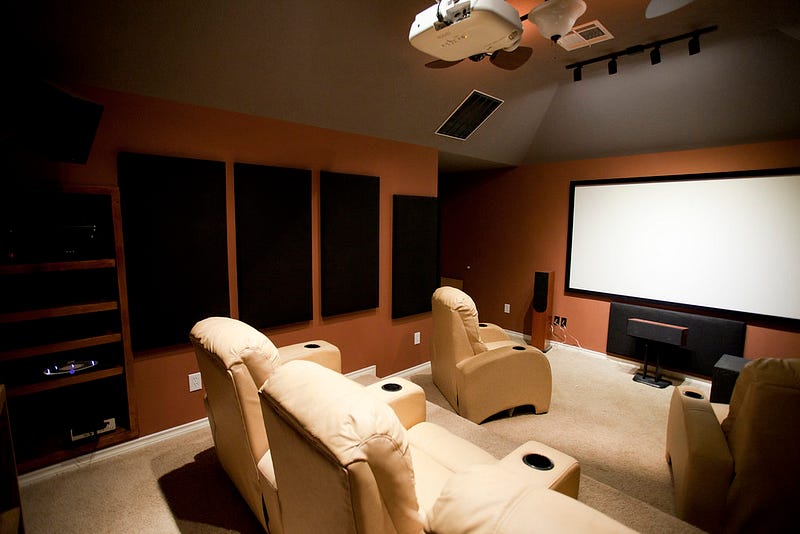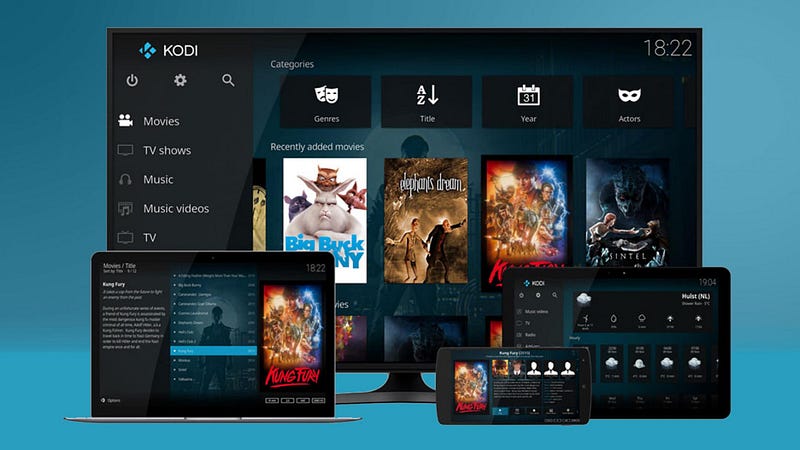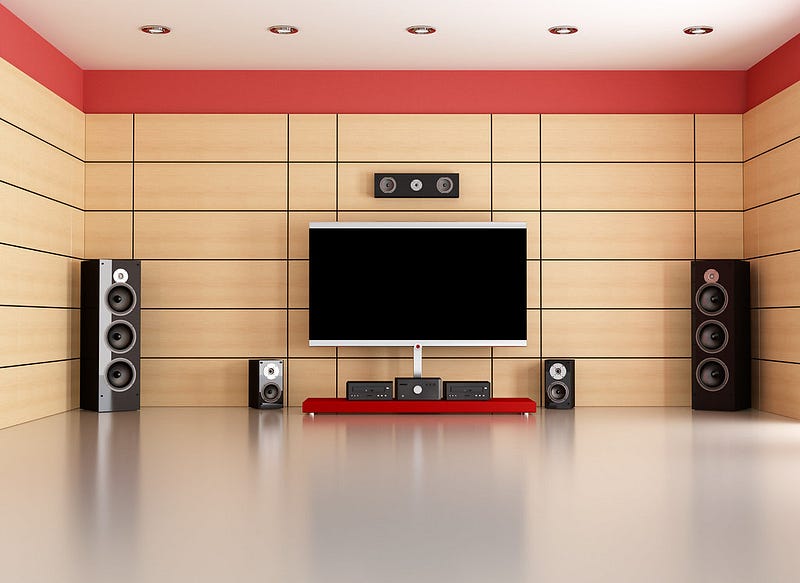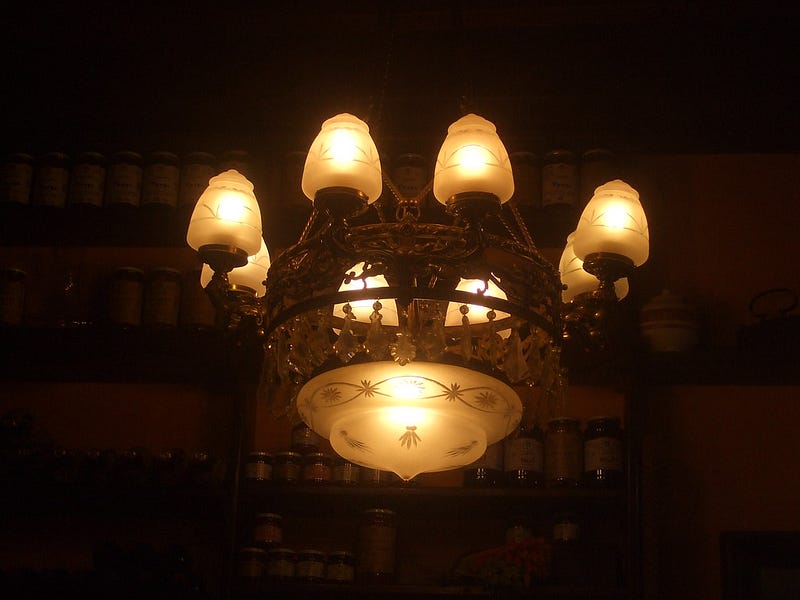DIY Home Theater Hacks & Essentials for the Perfect Setup
An overview of everything you need to think about when creating a home theater!

When Covid-19 arrived, everything changed. The movie theater has always been one of my safe, happy places. But, suddenly, all indoor spaces were places of inherent danger.
Stuck inside, I knew that I needed to introduce some changes to the stifling, overpriced, 500 square foot apartment my partner and I shared. With some elbow grease, I was able to turn our living room into a bastion of comfort with hardly any money at all.
You don’t need a lot of money to make a home theater! Light is your enemy when it comes to a home theater. Once you can make your space dark enough, even a cheap Chinese $100 projector will dazzle. And from there, it’s all a matter of taste.
The very first commercial movie theater was at the 1983 Chicago World’s Fair in a special building designed specifically to showcase Edward Muybridge’s Zoopraxiscope. In a series of lectures on animal locomotion, the public was able to view (in Muybridge’s own words) “synthetically demonstrated movements photographed from life.”
We have come a long way from these early public theaters, yet the fascination with theaters remains. There’s something delightfully cozy about snuggling up with a partner over a bag of popcorn or seeing the latest blockbuster with friends. At the same time, the flickering light of a projector flashes movies on a screen.
Thankfully, modern technology has also made it possible to create a home theater — for almost any budget! And, unlike Muybridge, you don’t even need to have a special building constructed.
Home theater projector

It’s not enough to have a large smart-TV, not if you want to truly create a theater vibe. The only way to get a proper cinema experience is through the flickering magic of a projector. These are also cheaper and provide much larger screens than any TV.
The downside to this is that there are so many projectors on the market, it can be difficult to choose the right one. However, the upside is that because there are so many models, it’s possible to pick just the right projector for your unique situation and budget.
If you need help picking out the perfect projector, read my article about that here!

The perfect projector screen

Once you have a projector in hand, you probably need something to project on. The simplest solution (and the best one for those with limited space) is the retractable or “pull-down” projector screen. A bit more expensive than its DIY counterparts, this variety nonetheless affords you a lot of flexibility when it comes to setting up your home theater.
Read all about the best options for a home theater screen, here!

Media playback and casting

Alright, so you’re ready to take the plunge into the world of home cinema… but how do you send your media to the projector in the first place?
These days, many projectors boast features like Wi-Fi, and even Bluetooth, on top of classic options like SD card readers and HDMI ports.
The truth, though, is that you’re limiting yourself if you lock yourself into using just the projector’s internal hardware (and some of those advanced features are likely to raise the price by a lot).
Ways to stream video directly to your projector
Purchase a streaming playback device like the Amazon Firestick, Roku Player, Google Chromecast, or NVIDIA Shield. I, personally, love the power of the NVIDIA Shield (especially if you’re a gamer and want to use your home theater to play Cyberpunk 2077 in style).
These devices allow you to cast media content from your phone or computer directly into your projector, eliminating the need for a clunky multistep effort every time you want to watch a new episode of The Expanse.
Use Plex or Kodi to get all the power of Netflix in your DIY home theater
I’ve hinted already at the power of streaming devices hooked up to your projector, but what if we took things a step farther? With your own media server running the right software, you can have all the power of Netflix at your command, but for media you already own!
Plex
I often recommend Plex for its features and ease of use, but many great media server platforms are available. The NVIDIA Shield comes pre-installed with the Plex software, however, so the cost of the whole thing can be kept as low as possible while providing the biggest reward.
DIY option: Kodi Media Center

You can totally have your own DIY viewing experience by building your Kodi Media Center with a Raspberry Pi. Kodi will work with most projectors, and you’ll have something that’s personalized just for you!
Streaming music to your home theater
Why have a setup that can only do one thing? Go for a whole entertainment suite by making sure you can play music on your system without having to turn the projector on.
This is where the benefit of having a streaming device (like those I mentioned in the last step) is so vital. You can cast music directly to your home theater from apps on your phone, most of which will then display music backgrounds and information on your projector screen.
Of course, you might not always want to use the projector itself and stream directly to your speaker. In that case, a media server like the NVIDIA Shield or Kodi is a great way to go. With the Shield on and running in the background, you can pass audio straight through it without even turning the projector on!
How to set it up
All you need for this is an external USB sound adapter. Connect this to your Nvidia Shield or media system, and then plug your speaker’s aux cable into it instead of your projector. Now your sound will arrive directly from the Shield!
For an even better cordless experience, if you choose to use a Bluetooth-capable soundbar for your audio needs, you can plug a Bluetooth transmitter dongle directly into the sound adapter and have a wireless audio experience!
Best home theater speaker

Audio quality is one of the most important things for a home theater, but choosing the right speaker can quickly become a daunting task.
The best fit for every circumstance costs a ton of money, and even more inexpensive options can quickly become a hassle.
If you have a fair amount of space and can dedicate a whole room to your home theater set-up, I recommend buying a wired sound-system. A wired system seems intimidating, but it allows you to create a full surround sound experience for the lowest price.
Small space hack
If you have a smaller living space, you probably want something that can be multipurpose and unobtrusive while also being easy to move when the need arises. In that case, go for a Bluetooth soundbar.
Soundbars are an awesome way to get good audio quality for a minimum of space and only one cord (the power cable). You’ll certainly get a less dynamic and immersive experience. Still, the benefits of a hassle-free installation and mobility might be worth it, especially if you’re renting and don’t want to install a whole mess of cables throughout your home theater room.
Just make sure you can place it front and center, directly beneath (and in front of) your projector screen, or you’ll get terrible sound.
Sound hacks to keep your neighbors happy

Rubber feet
This is one of the easiest methods for keeping your sound from spilling over into the rest of your home or apartment. Often used for washing machines (which can get quite loud on hard surfaces) rubber sound isolators help dampen the connection between the thing producing sound and its surroundings. If you’re using a subwoofer, this is a handy hack, but even for an average soundbar, this can help keep the sound isolated to where you want it.
Sound dampening/reduce reflective sounds
In a large space, hard and reflective surfaces can be a boon. They bounce sound back, providing a cathedral-like acoustic resonance that charms the ears. In a small space, this same effect creates a dissonant nightmare.
This becomes even more important if you live in an apartment where your sound can spill over into a neighbor’s environment. To avoid this, dampen the surfaces in your room. Throw rugs, plush seating, and bookshelves are all a great way to go.
For a powerful hack, you could even put thick curtains on runners around the outermost edge of your home theater room. When it’s movie time, pull the curtains into place, and they’ll absorb some of that ambient noise.
Surround Sound placement
There’s really no substitute for an immersive sound environment. If you don’t mind the added time needed to install a 5.1 surround sound system (and are willing to do the extra work of figuring out things like cable placement), this will provide an audio experience so warm that you’ll never to want to leave.
The trick is making sure that all your speakers are angled toward the central spot in the room where you’ll be sitting (don’t just place them all forward).
Also, make sure to keep your audio cables isolated and know that the longer your audio cables are, the thicker their protective coating should be to avoid getting unfortunate distortions in your awesome home theater setup.
You can get pretty detailed with your home theater audio features, so make sure to do your research if you want to dive into an advanced audio configuration.
Blackout Curtains create the perfect home theater

Even if you decide not to put curtains all the way around your home theater room, I cannot stress enough how important blackout curtains are if your home theater has windows.
Projectors need low-light conditions to be effective, and the best way to control your light level is to block out any light coming in from outside. Besides, blackout curtains come with a host of other benefits, like better sleep and reduced outside noise (especially nice for those who live in a city).
Hide those cables away!

If you’re spending this much time to create the perfect home theater, you want it to look nice! Careful planning for cable placement is vital and cannot be overlooked, but there will undoubtedly be plenty of cables running across your visual space even then. Short of placing your cables behind your walls (an expensive and difficult project), what can be done?
Use cable hiding strips
The easiest way to hide the cables in your home theater is to use cable strips, which contain the cables and hide them from view. If the cable strip matches your paint job, then the work is done — but you can easily paint these the same color as your walls and ceiling for the perfect, unobtrusive cable array.
Power strips for home theaters
Even a simple home theater set-up will require a fair number of electrical outlets. Finding a place to put all the power plugs can be difficult if you’re relying on wall outlets alone, and, more importantly, some of your delicate equipment can be damaged by power surges.
That’s why I recommend using surge-protecting power strips and proper extension cables for your power needs. This way, you can arrange everything based on what makes the most sense with your available space, rather than trying to make your home theater fit the availability of your wall sockets.
Perfect home theater seating

You’ve no doubt seen those home theaters that go all-out with replica high-tech movie theater seats. While those are undeniably awesome, they’re impractical unless you have a large amount of money and the space to install them.
That’s why I recommend going a different route and figuring out the needs of your space first. One of the things you want your home theater furniture to do is keep the space’s sounds from reflecting.
One of the best ways to do this is by installing a couch in the space. Not only does this provide ample seating for your whole family pod, but it also covers the largest amount of space for the smallest amount of money. Add in some plush footrests (which can double as chairs or even low tables), and you’ve got everything you need to kick back and enjoy.
Inexpensive folding couch
That said, if space is at a minimum, finding a way to transform your normal room arrangement into a special movie time setting is totally possible with the right folding couch (which you can then slip out of the way later and which will always be useful for guests in the future!)
Smart-lighting for that perfect home theater effect

There’s something magical about the moment in a movie theater when the lighting dims, and the previews start to play. If you want to recreate some of that magic at home, all you need is a little “smart” technology.
For the cheapest and easiest method, I recommend getting a set of “smart plugs”. You can then plug in your existing lights and direct the lights to turn on or off from an app on your phone. For a slightly more expensive option, you can buy dimmable smart lights, which you can control from your phone.
Set up Homebridge
For a further step, connect all your smart home devices to a central hub like Homebridge and control all your smart appliances from a single spot!
Aesthetics for the perfect home theater

If you’re turning a whole room into a home theater, this step really cannot be overlooked.
Movie posters
Movie posters in frames are the easiest way to go. You can easily purchase movie posters online and frames for them don’t cost much either.
Put a couple of these beauties, and you’ll feel like you’re actually at the cinema. Just be aware that you shouldn’t put up too many of these on the walls, as they’ll create a more reflective sound environment.
Rolling popcorn maker

If you’re creating a home theater that needs to share space with a multipurpose room, you can still find ways to add a special touch for when you want to turn the room into a magical cinema experience.
One of the easiest is to purchase a rolling popcorn maker and wheel it out for the most special movie occasions. That way, you can create the ambiance without permanently altering your space.
Budget-friendly popcorn maker
Maybe you want a cheaper alternative to the rolling popcorn maker. It’s just not a movie without the concessions. I’ll make the “concession” that not everyone adores popcorn as much as me, but I think you’ll agree that few things are more a part of the iconic theater experience than the rich aroma of hot buttered popcorn suffusing the air.
If you want to create the ultimate home theater popcorn experience, I recommend purchasing a rolling popcorn maker that does everything you’ve come to expect from the movie theater.
That said, my favorite way to make popcorn is also the healthiest: an air-popper. Not only do you get the deliciousness of the popcorn, but you also avoid cooking it in fats and thereby save yourself a huge number of calories.
Popcorn flavorings
If you haven’t noticed yet, I’m an absolute foodie. I love healthy food, but I love flavor, too!
Popcorn butter spray hack
By using aerosolized butter spray, you can precisely control how much goes onto your popcorn. A hack for those who want to count the calories in popcorn spray? Each one-second spray is just under ten calories for the average brand.
Popcorn salt
To get the perfect movie theater popcorn, you’ll need to get popcorn salt. This is a fine-ground flavored salt that, when gingerly applied to your popcorn, is certain to make your taste buds perk right up.
Of course, you can go the extra mile and have an array of flavorings available!
I recommend placing your favorite into various spice shakers and keeping them in a special organizer, which you bring out for movie nights. My favorites are cheddar cheese and nutritional yeast (no, seriously, it’s amazing).
Well, that’s everything I have for you right off the bat. Creating a home theater helped my wife and I survive the pandemic with our sanity intact, but it’s become one of our regular little joys in life as well. From movie nights with dear friends, to date-nights and sci-fi binges.
Hi there! I’m Odin Halvorson, an independent scholar, film fanatic, fiction author, and tech enthusiast. If you like my work and want to support me, please consider subscribing to a paid tier for as low as $2.50 per month!
